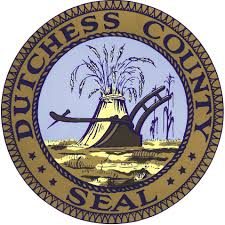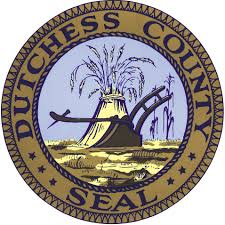
Composting, Recycling and Waste-to-Energy Are Focus of County’s Local Solid Waste Management Plan
Strategy to help guide future of waste management in Dutchess County
Poughkeepsie … Development of organic composting opportunities, reduction of waste generation and continued increase of materials being recycled and reused in Dutchess County are the focus areas of the County’s 2023 Local Solid Waste Management Plan (LSWMP) which will be reviewed this evening at the County Legislature’s Environmental Committee for adoption.
Dutchess County has achieved significant success since issuing its last decennial plan¸ entitled “Rethinking Waste,” increasing the recycling rate for municipal solid waste in the county from 36% in 2012 to 42% in 2022, well above the New York State* recycling rate of 19% and the national* average of 35%. When construction & debris recycling is included, Dutchess County’s overall recycling rate is 50.5%, compared to New York’s average rate of 43%. (New York State and national rates are 2018 EPA data, the most updated data available).
County Executive William F.X. O’Neil said, “Dutchess County’s Division of Solid Waste Management has made great strides in recent years, working to decrease our community’s impact on our environment. Our latest Local Solid Waste Management Plan furthers that progress, emphasizing the important roles composting and waste-to-energy facilities can play to eliminate waste throughout Dutchess County. I invite legislators to study the proposal and its recommendations, and I look forward to their adoption of the comprehensive plan, which outlines simple, common-sense steps every resident – and our county, collectively – can take to ensure the planet’s future prosperity.”
The new plan builds on that success and prioritizes expanding composting opportunities, particularly for residents. While organic composting has increased throughout Dutchess County each year, it is primarily done by commercial entities; and there has been limited opportunities for residents to take part in such endeavors. For most County residents, the only composting opportunity is backyard composting, which the Division of Solid Waste Management promotes through the sale of backyard composting bins, which are sold at cost.
Dutchess County hopes to build on the success of locally based composting pilot programs that have been done in the City of Beacon, Village of Rhinebeck and the Town of Red Hook. These projects demonstrate how smaller, community-based sites are much more accessible and functional for residents and more economical to operate. The County is working on providing opportunity and support for local municipalities to offer the best approach that meets the needs of their residents, providing the ability to compost their own organics close to home which encourages greater participation as well as making it easier to distribute compost to residents for personal use.
The County’s plan also emphasizes the benefits of waste-to-energy over landfilling waste, the disposal option many counties throughout New York State utilize. Dutchess County Resource Recovery Agency’s (RRA) waste-to-energy facility was built in the 1980s, under the direction of past County Executive Lucille Pattison, to end the County’s dependence on landfills. Today, there are no operating landfills in Dutchess County. Landfills produce methane, a greenhouse gas that has a global warming potential of more than 80 times that of carbon dioxide in its first 20 years and 25 times greater over the course of 100 years. New York State greenhouse gas emissions from the waste sector represent about 12 percent of statewide emissions; with landfills making up 78 percent of that total. Those statistics do not account for the additional emissions from long-haul trucking to haul waste to landfills.
The RRA’s waste-to-energy facility incinerates 140,000 to 150,000 tons of solid waste each year, producing enough electricity for the energy grid to power approximately 10,000 homes. Additionally, 4,000 to 6,000 tons of ferrous metals are recovered each year. The RRA’s incineration is closely monitored to ensure operations adhere to strict national air quality regulations. The RRA’s operations are well within or below the state and federal emission limits. Independent studies have shown human health is not adversely affected by waste-to-energy facilities and these facilities play a key role as a part of an environmentally sound system, according to the report “The Scientific Truth about Waste to Energy,” a 2021 review of scientific industry studies conducted by the City College of New York’s Grove School of Engineering which provides an exhaustive assessment of waste-to-energy processes’ influences on public and environmental health and was peer-reviewed by subject matter experts from Columbia University, the University of Maryland, North Carolina State University, and State University of New York-Stony Brook, among others.
Reducing the amount of solid waste generated in Dutchess County and continuing to increase recycling rates is a key focus for the Division of Solid Waste Management. The Dutchess County Recycling Educator promotes recycling benefits and how-to’s to county residents through webinars, zoom meetings, in-person presentations, flyers, online resources and social media as well as collaborations with community organizations. One collaboration is with the Town of Poughkeepsie’s Climate Smart Task Force and Sustainable Hudson Valley for the “Poughkeepsie Repair Café” happening this Saturday, September 9th at Environmental Cooperative at the Vassar Barns, 50 Vassar Farm Lane in Poughkeepsie where residents can bring everyday goods to be repaired so they don’t have to be discarded.
The New York State Department of Environmental Conservation (DEC) has reviewed the County’s LSWMP and it has been constituted as an “approvable plan” that is in accordance with New York State Environmental Conservation Law and the State’s Solid Waste Management Facilities regulations. Per State regulation, the County Legislature must adopt the County’s LSWMP to grant final approval. Following adoption by the Environmental Committee, the full County Legislature will vote on the LSWMP at its September 11th board meeting. While the LSWMP is a ten-year plan, it is considered a fluid document and is updated every two years, per DEC requirements.
Additional information about the Division of Solid Waste Management, including recycling info and events, is available on the division’s website.

